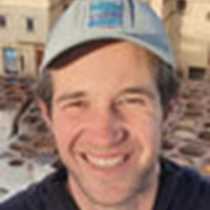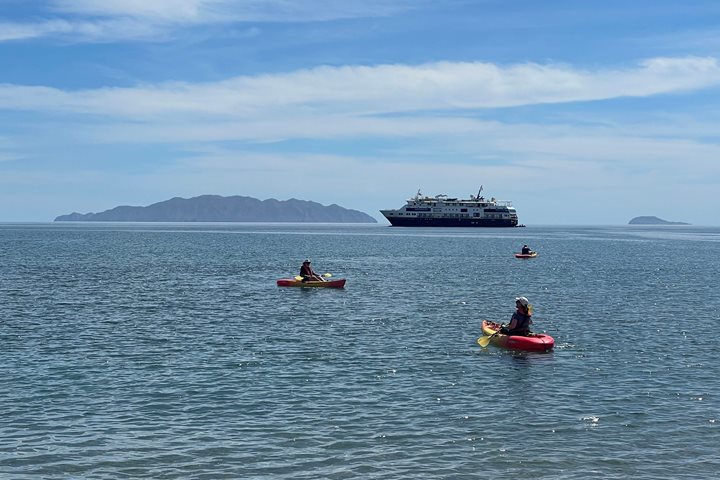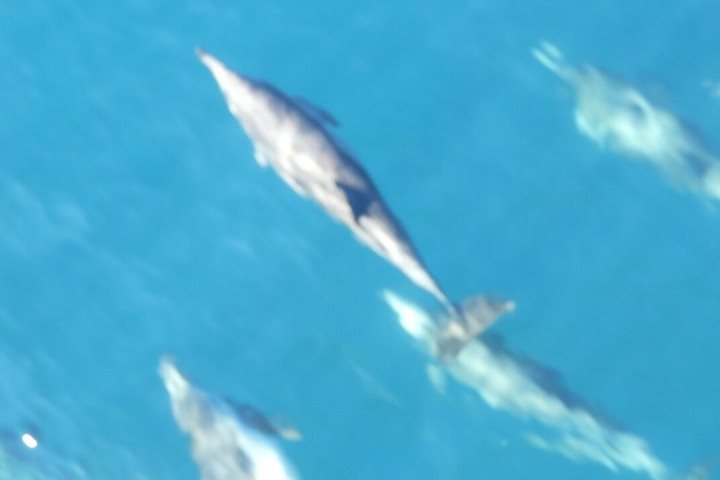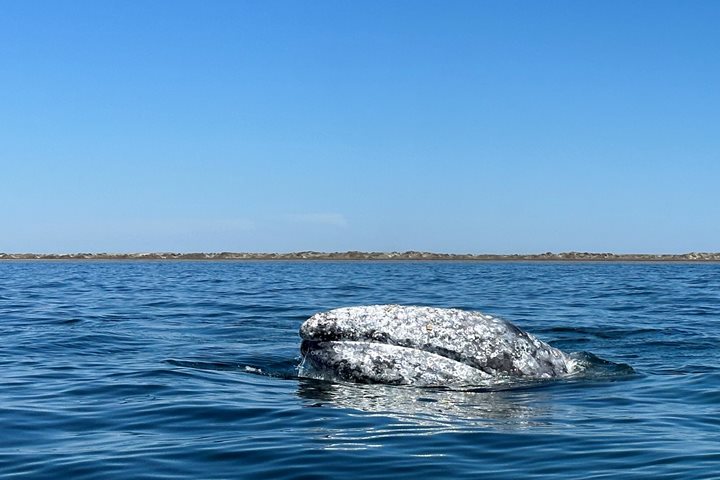Today, the guests, staff, and crew of National Geographic Venture woke up at Ensenada Grande, a deep bay on the northwest corner of Isla Partida, north of La Paz. We planned to land here for early morning hikes, but the wind shifted from north to west before sunrise, causing the anchorage to no longer be protected. We changed course and relocated to El Cardonal, another bay to the south that was more sheltered. It was a beautiful morning with soft light illuminating the high walls that are composed of layers of ignimbrite and pyroclastic flows. These walls climb high above the water, descending to a sandy, mangrove-fringed beach at the head of the bay.
As we boarded expedition landing craft and shuttled towards the beach, dozens of brown pelicans were plunge-diving all around us into the shallow waters. Even with such acute vision, it is amazing that they could detect the presence of fish in water so cloudy from wave action and a sandy bottom agitated by the falling tide. Brown pelicans have several adaptations that allow them to dive at such high speeds without harming themselves. When they dive, they turn their bodies to the left to protect their trachea and esophagus, which are on the right side of their neck. They also inflate air sacs beneath their skin right before impact to protect their internal organs. They tuck their wings back, and they have special nictitating membranes that cover their eyes to prevent damage. They are amazing birds.
Once ashore, we divided into hiking groups and set off to explore Isla Partida. The island is narrow at El Cardonal, and our walks led us through mangroves and tidal flats to an overlook of the Gulf of California on the opposite side of the island. Before leaving the beach, several groups were treated to great views of white ibises and other shorebirds foraging for food in the shallow waters. We explored the mangroves, where the red mangrove trees hold on tight with their stilt-like roots. Slightly farther inland, the red mangroves transitioned to black mangroves, which expel salt through their leaves. We touched the leaves and noticed that they felt like sandpaper. The salt crystals were clearly visible.
Our walks led us through a wide array of desert plants, including galloping cacti, lomboy, desert thorn, candelilla, chainlink cholla, and towering cardón cacti, many with holes carved out by gila or ladder-backed woodpeckers. One cholla plant had an impressive verdin nest hanging from it. The verdin, a small, chickadee-sized bird with a mustard-colored head, builds its nest in the higher reaches of spiny cacti like the cholla to protect it from predation by animals like ringtail cats. We searched for endemic black jackrabbits, and while we didn’t see any, we did see several endemic antelope ground squirrels, which are chipmunk-like in appearance and call. We enjoyed the sweeping view from the overlook before returning to our landing for shuttles back to the ship for brunch. The tide had receded farther, and it was an adventure to wade out through the shallows to meet the Zodiacs. After a delicious brunch with all the fixings, we checked out Ensenada Grande once more in hopes of being able to complete afternoon operations there, but the winds were too gusty.
We spent the rest of the afternoon cruising along the western sides of Islas Espíritu Santo and Partida, searching for marine life and enjoying views of the islands’ spectacular, multi-hued layers of uplifted rock. Naturalist Carlos Navarro shared a presentation about the history of Baja California. After recap and dinner, naturalist Adrian Cerda educated us about the incredible cardón cactus, a ubiquitous Baja California species that plays a key role in the ecosystem here. We made the most of this blustery day and are now headed north towards Isla San Jose.







